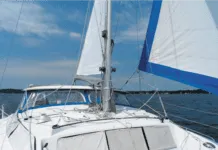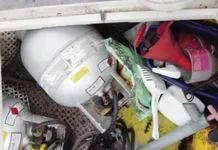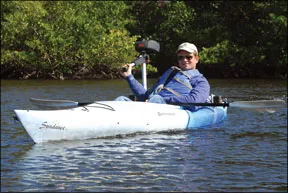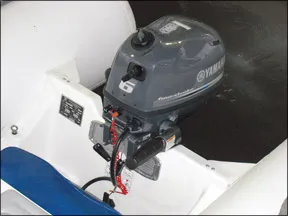12 Ways to Extend Your AGM Batterys Life
12 Ways to Extend Your AGM Batterys Life
Taking the Other Way Home
Our 38-foot catamaran, Josepheline, was built by Lightwave Yachts near Brisbane, Australia. Josepheline draws 3 feet, 6 inches and has a 22-foot beam. It is a fairly conventional design: mini fin keels, two forward queen berths under the bridgedeck, a double berth aft to starboard, and a decent sized shower and head located aft in the port hull. Shes stood the test of time-and distance. Weve cruised about 35,000 nautical miles aboard Josepheline.
Painting Water Tanks
When it comes to onboard water tanks, we prefer stainless, fiberglass, and even roto-molded tanks (in that order) to aluminum ones. Aluminum tanks tend to pit and corrode over time, often needing to be replaced. The insides of the two 60-gallon aluminum water tanks in our 30-year-old Valiant 40 were more like a nasty moonscape than a drinking source. Their surfaces were pitted and rusted from what looked like a reaction to long-time use of chlorine.
Engine Coolant Replacement
In your recent article on engine coolants (see PS October 2014 online), you wrote about replacement intervals for coolants, and Im looking for clarification. You indicated that the following heavy-duty coolants for diesels were coolants, not antifreeze: Zerex GO5, Peak Final Charge NOAT, and Detroit Diesel Power Cool Plus. You also suggested that I replace the coolant every 1,000 hours, . . . (and for little used engines) changing the coolant every five years is a more practical approach.
AWAB, ABA Top Long-term Test
General-purpose, relatively inexpensive hose clamps are all over most boats, but there are some applications where using a higher quality, corrosion resistant clamp is critical-such as engine hoses and through-hulls. Most quality clamps are stamped stainless steel, but there are many grades of steel, and making an alloy stainless and corrosion resistant is complicated and costly. You start with iron, which rusts easily, and through multiple processes, you add proportions of elements such as nickel, manganese, molybdenum, and chromium. Different percentages of these elements will improve the desired strength, hardness, and flexibility, as well as corrosion resistance, of the steel.
Winterizing an Outboard
For winterizing a small outboard engine, is it best to run the gas out of the engine or store it full with an additive mixed in? Is it the same for two-stroke and four-stroke engines? What about ethanol and non-ethanol gasoline?
When Choosing Pilots, Err on Side of Caution
In a nutshell, autopilots have one main function: to assume control of a vessels steering and control its heading, be it a specific course or on a selected route or to a waypoint. As with any crucial piece of gear (anchors being a great example), cost should not be the primary consideration in the selection process. Its crucial to select a unit that has both the power and ability to steer your boat effectively in all sea conditions youre likely to encounter.
Rotary-Drive Autopilot for Worm Gear Steering
Autopilots are one piece of electronics gear that truly has something to offer every sailor-from gunkholer to bluewater cruiser. Having this extra crewmember onboard not only eases the burden of shorthanded sailing, but also helps prevent helm fatigue. An autopilot allows solo sailors to use the head, more easily raise sails, or grab a bite to eat. Crewmembers can enjoy a passage, passing the time reading a book or watching the scenery without being a slave to the helm.
Some Propane Dos and Don’ts
Theres nothing more satisfying than capping a pleasant day on the water with a good meal, be it burgers and dogs on the grill or some fancy, culinary extravaganza whipped up by the galley wizard. Most marine stoves and grills use liquefied petroleum gas (LPG). Its efficient, relatively cheap, and widely available. Its also highly explosive-particularly with regards to boat installations-which makes proper installation and regular inspection so critical in onboard systems.
The Fight Against Head Odors Continues
A few years ago, we launched a series of holding tank odor tests, including evaluations of holding-tank vent filters and sanitation hoses. After 30 months of testing, weve reached some solid conclusions on the hoses and vent filters. The sanitation hoses we tested were Trident Marines 101/102 EPDM hose; SeaLands OdorSafe Plus, a PVC and acrylonitrile butadiene rubber hose; Raritan Engineerings butyl rubber Sani/Flex Odor Shield; and Shields Marines Poly-X polyurethane sanitation hose. The four holding-tank vent filters we tested were our homemade system, Dometic SeaLand SaniGard, Big Oranges 5/8-inch filter, and the Vetus No-Smell NSF16.














































